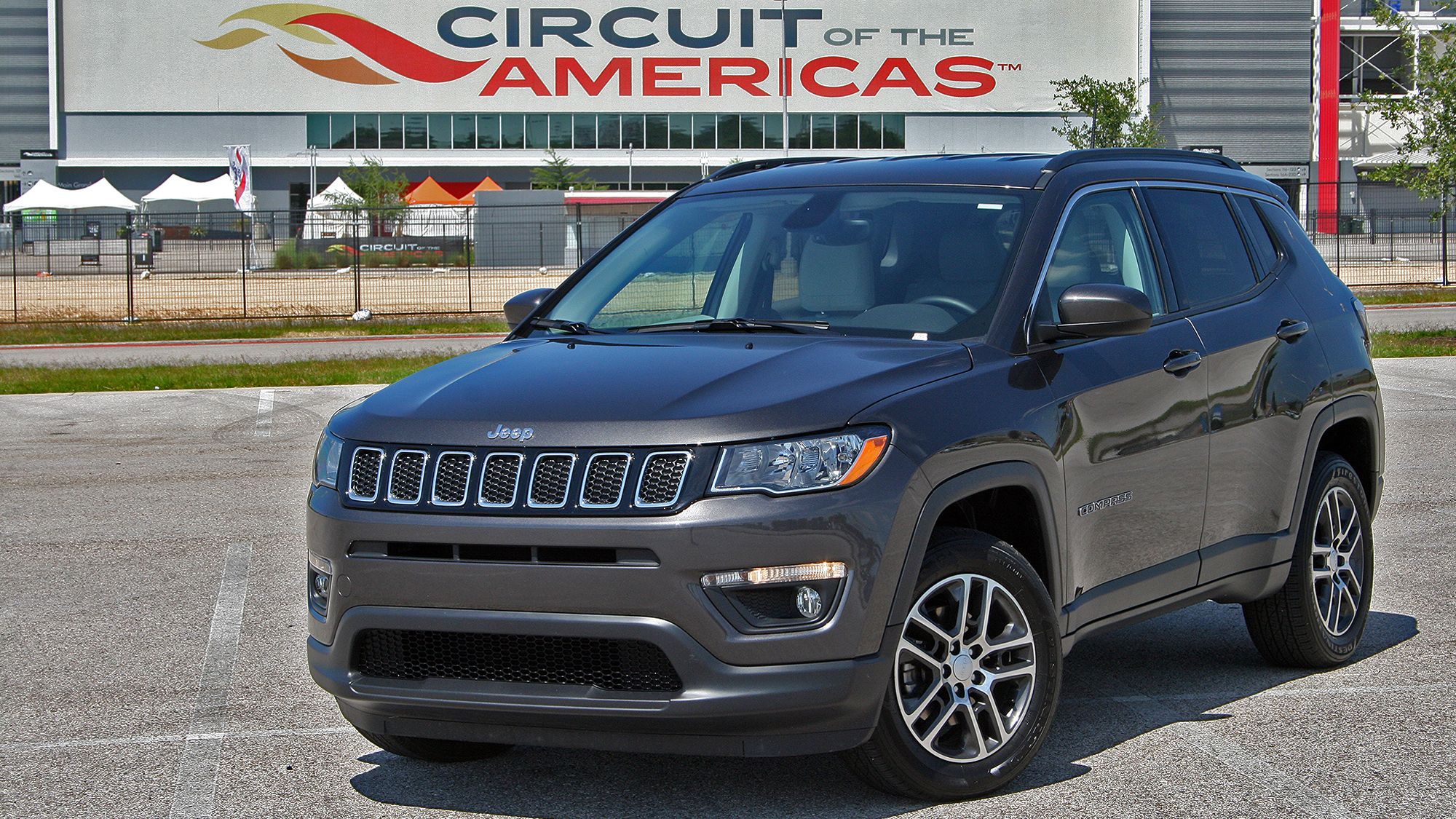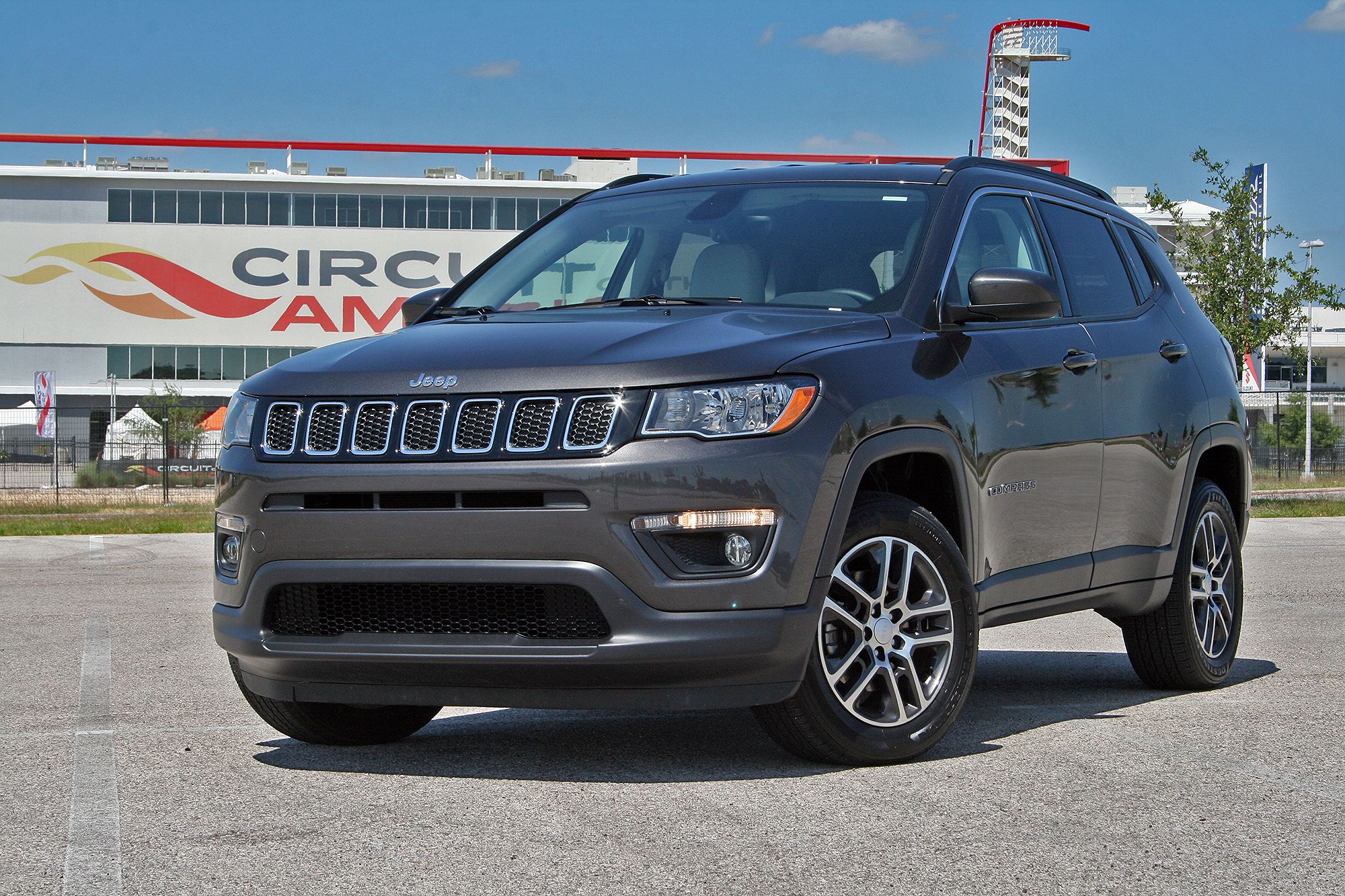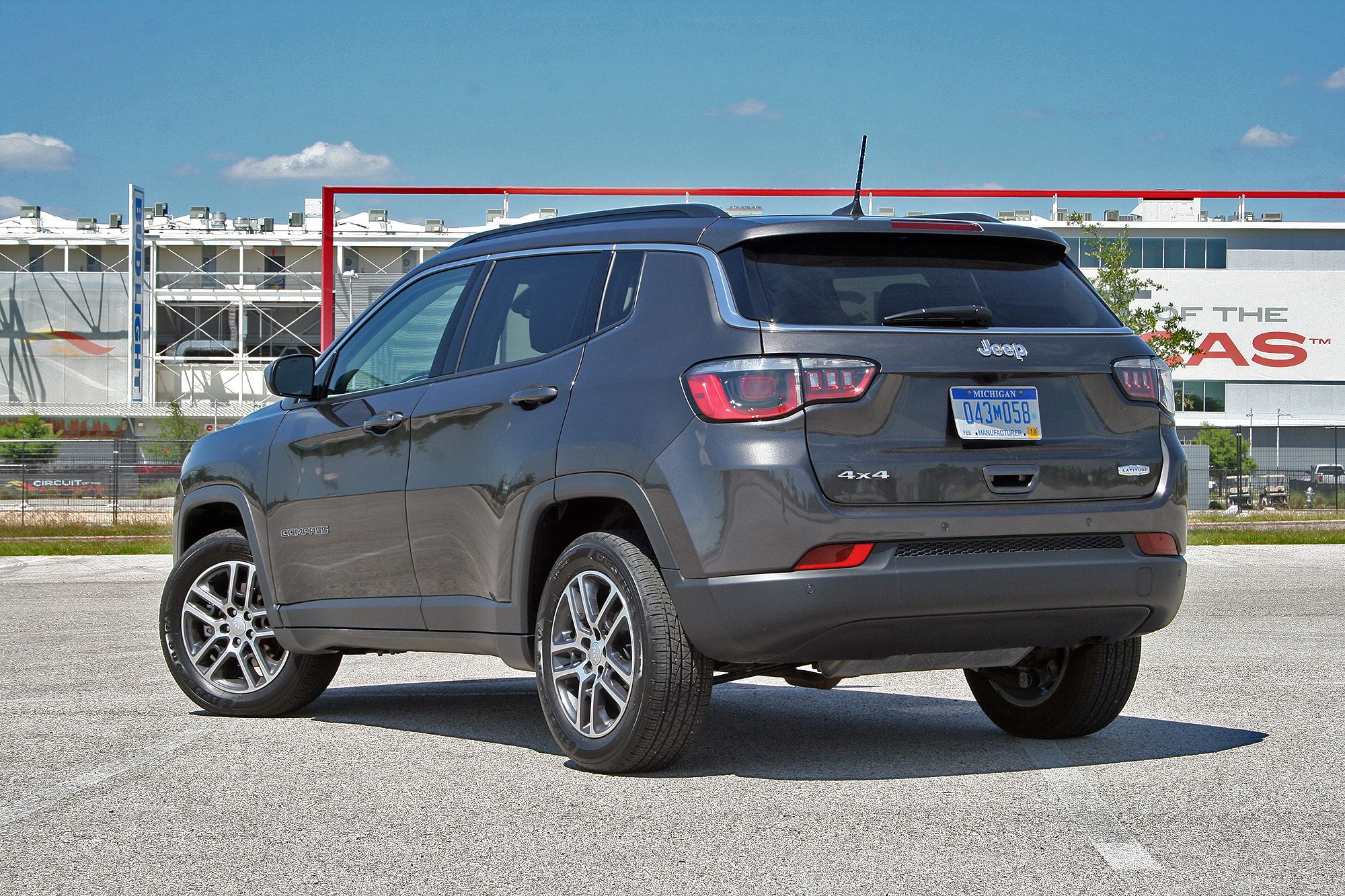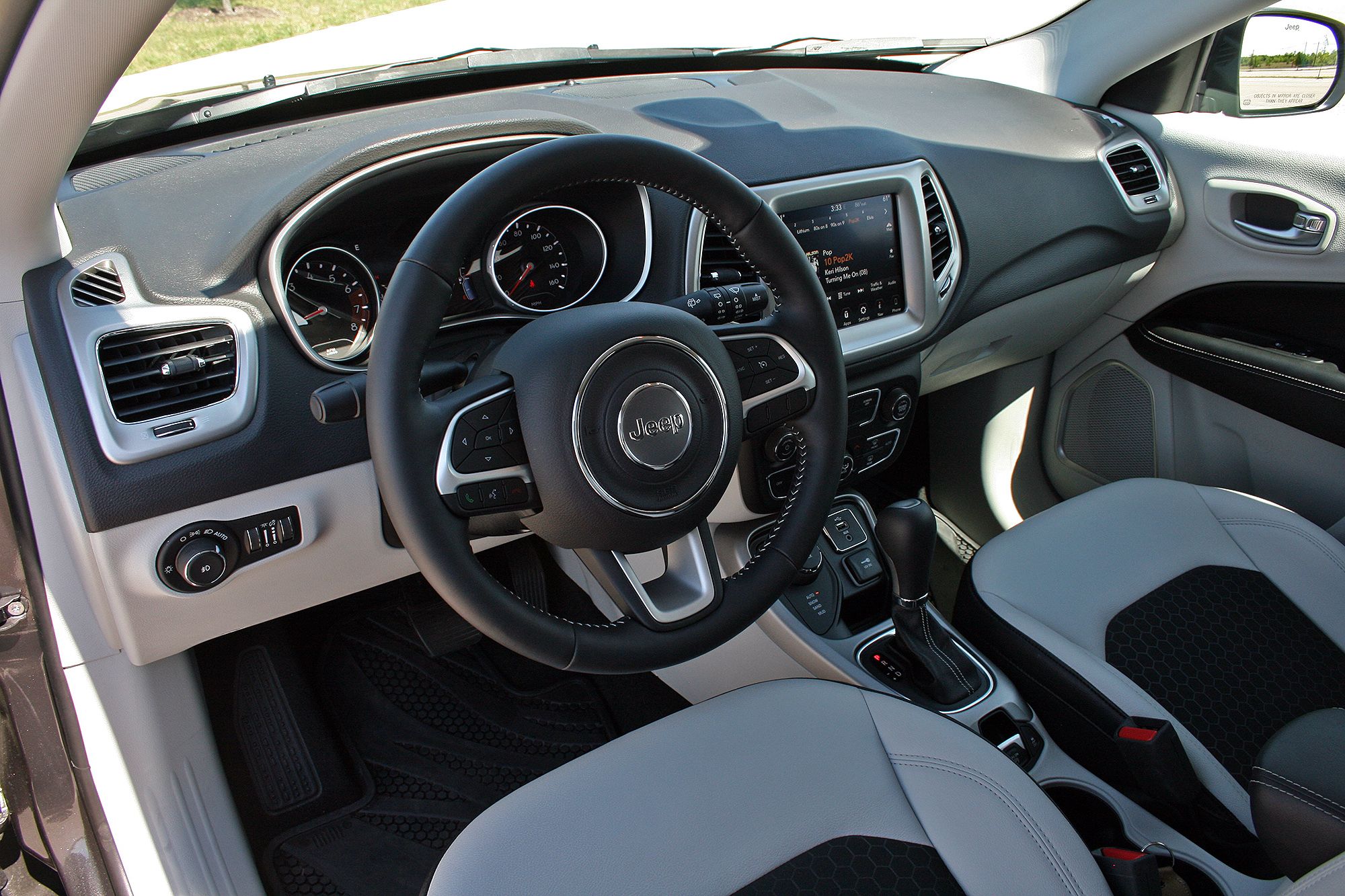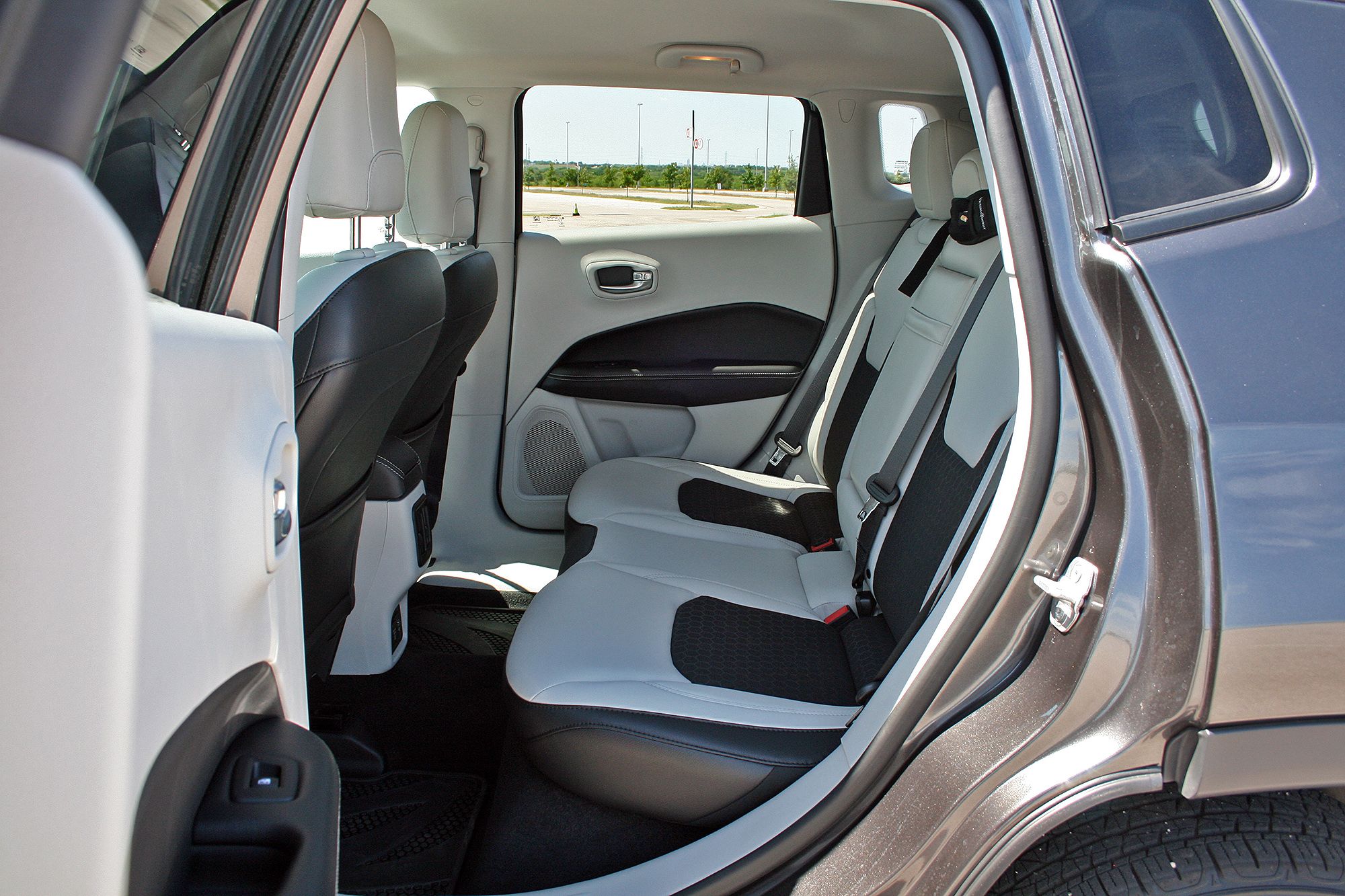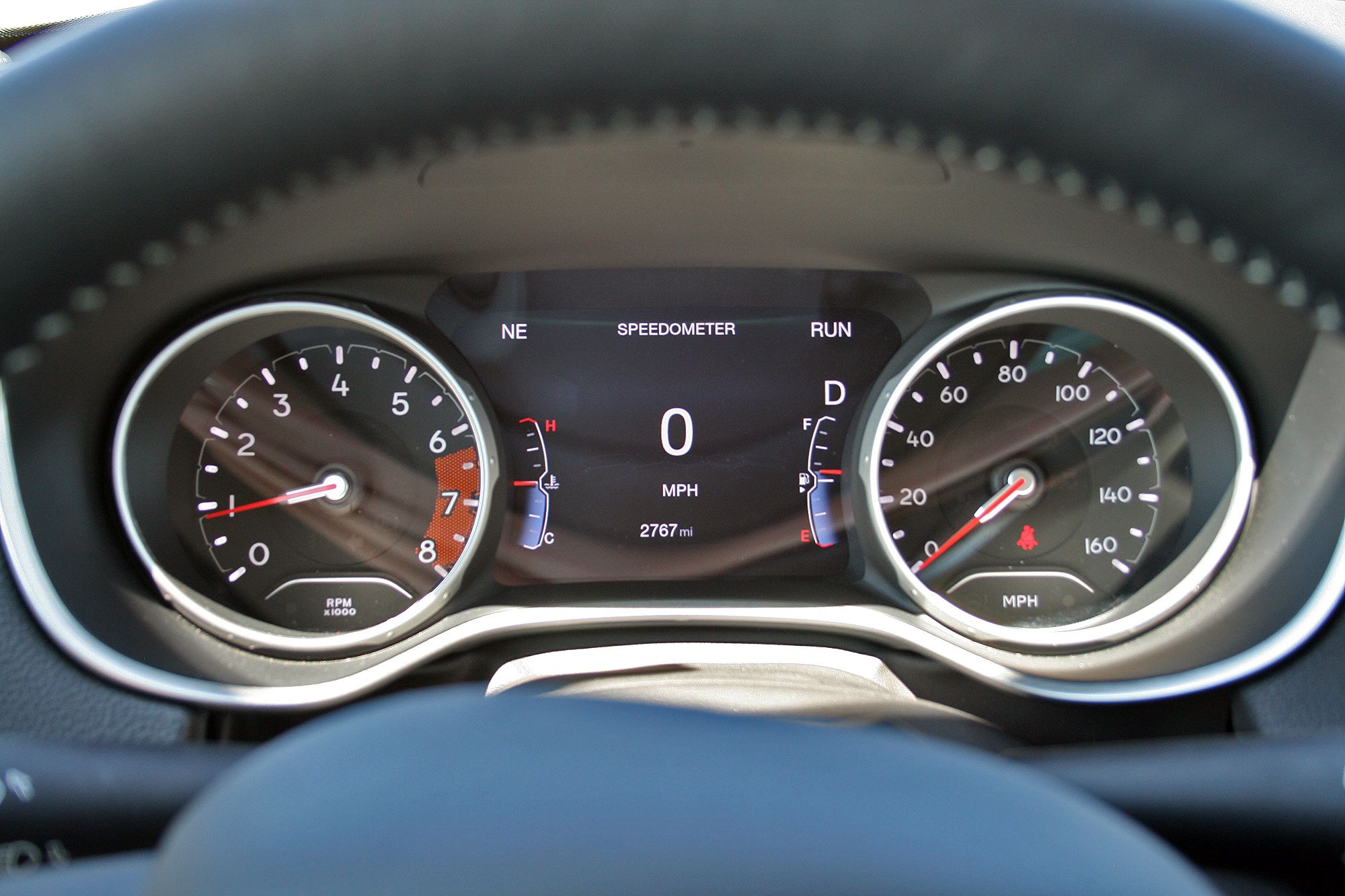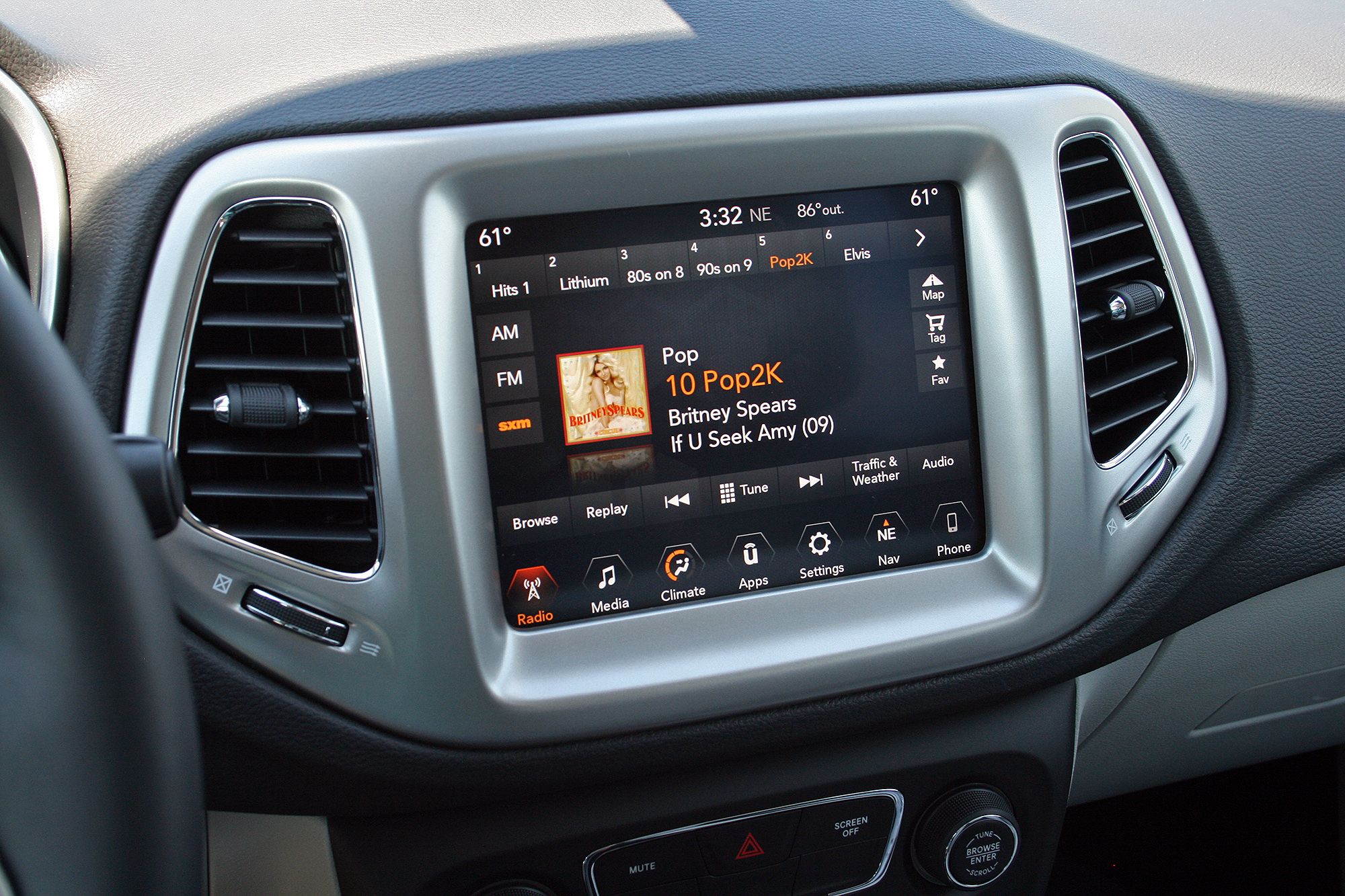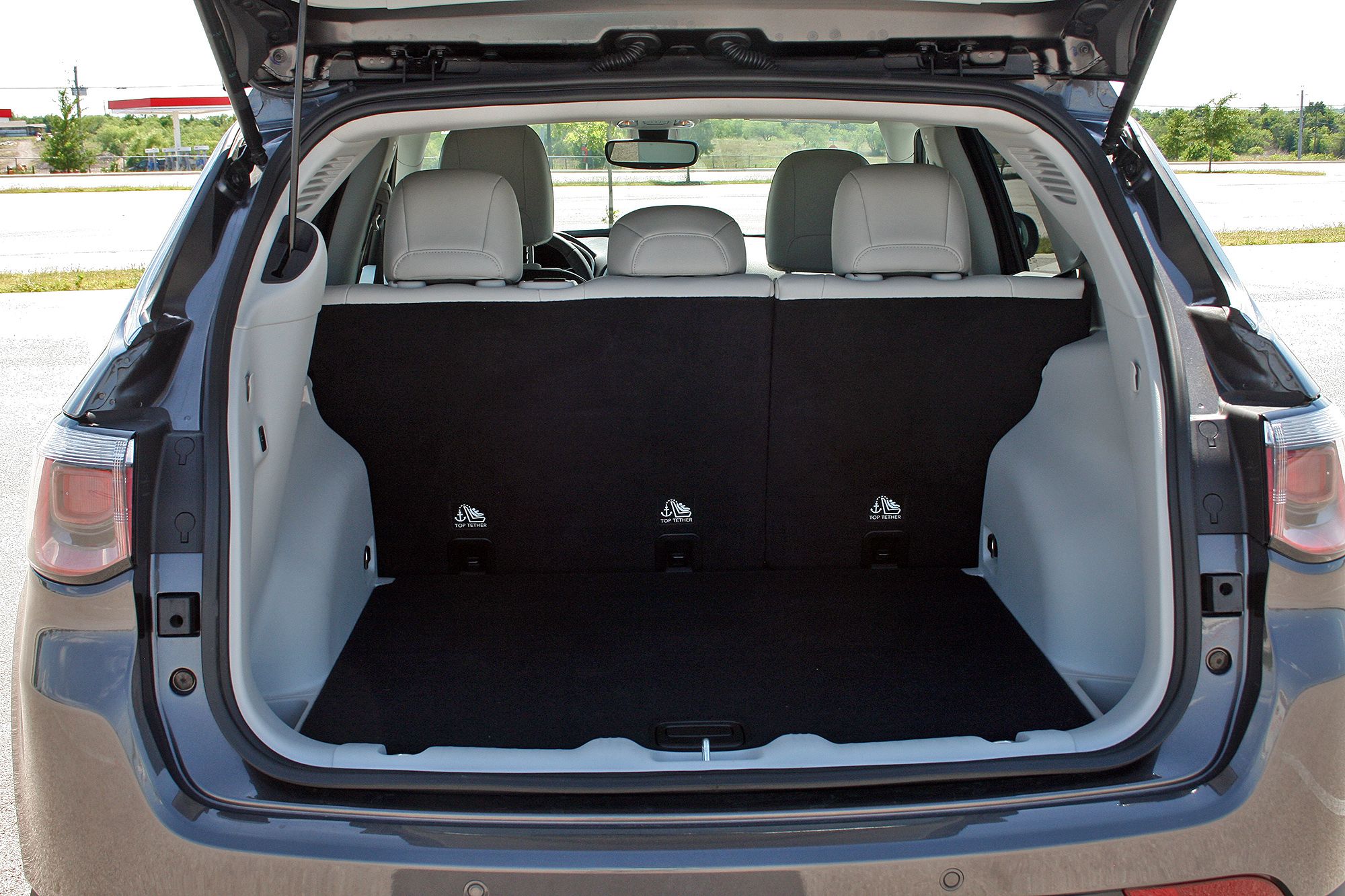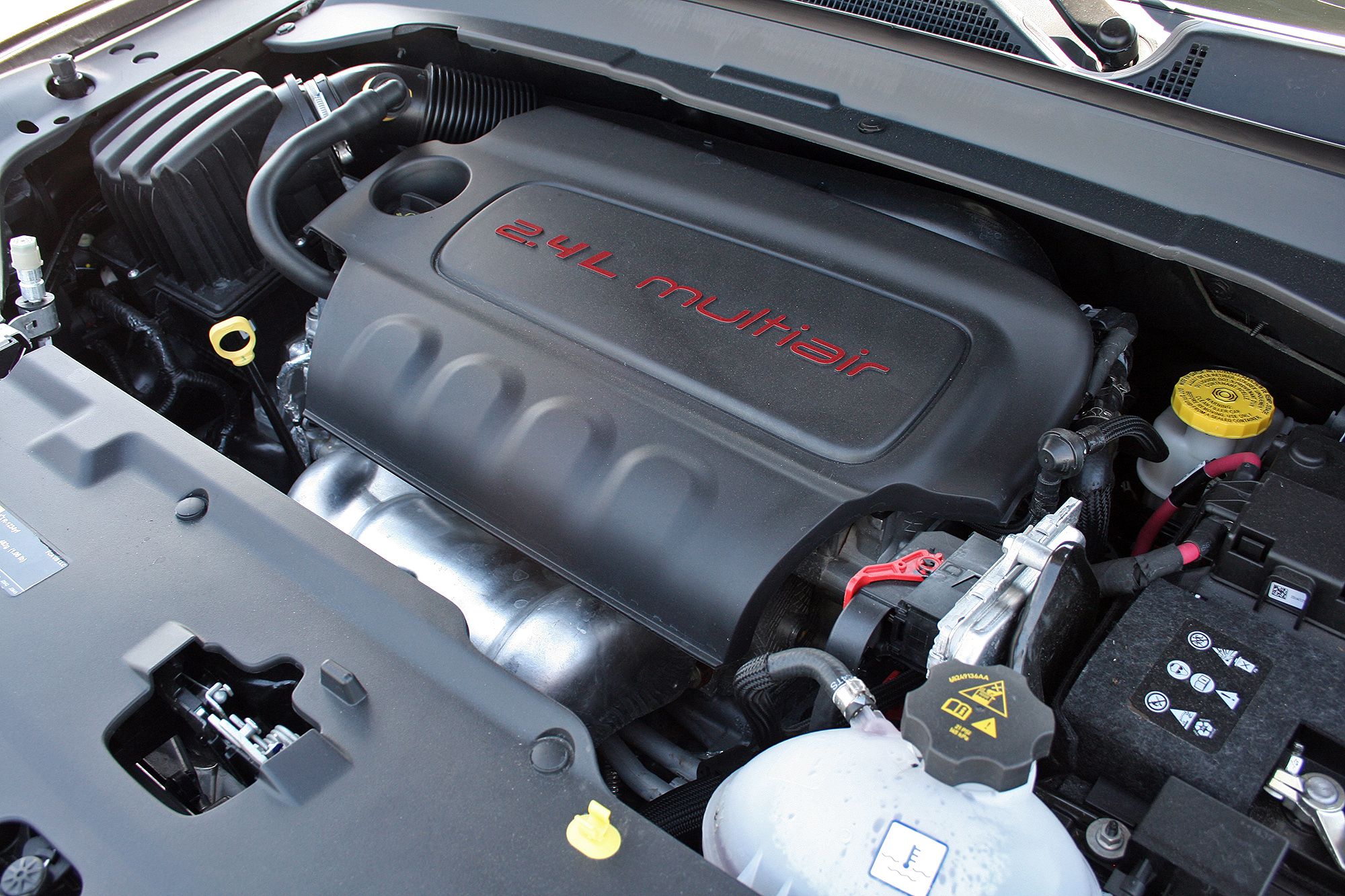The Jeep Compass enters its second generation for 2017 and is new from the tire treads up. That’s a huge deal considering just how terrible the first generation Compass was. It’s clear Jeep is confident the new Compass will succeed; it not only replaces the outgoing version, but also the equally terrible Patriot. The new Compass joins the boxy Renegade and funky Cherokee to comprise a relatively new crossover lineup. To see how the 2017 Compass stacks up, I took it for a quick spin along the grounds at the Circuit of the Americas racetrack in Austin, Texas.
The Compass might be all-new compared to the previous version, but its underpinning and greasy bits are familiar. It rides on a lengthened version of the Renegade’s Small-Wide 4x4 chassis and uses the same 2.4-liter Multiair four-cylinder and transmission options. The longer wheelbase positions the Compass directly between the smaller Renegade and larger Cherokee. Four trim levels rage from bare bones to tricked-out. They are the Sport, Latitude, Limited, and Trailhawk. Expect the Latitude, pictured here, to be the volume seller. So how’s the Compass drive? Keep reading to find out.
Continue reading for the full review.
First Impressions
This marked the first time I’d seen the 2017 Compass in person. At first blush, the Compass is a handsome rig with plenty of interesting styling for an affordable crossover. its seven-slot grille embodies the Jeep brand, while the faux floating roof gives it an upscale character. Plastic wheel arches and lower body cladding, along with short overhangs, help persuade the eyes of the Compass’ rugged nature. Clear lens covers over the exterior lighting counteracts that with a more modern theme. Chrome trim around the windows and painted door handles impart a level of quality. As a whole, the design mostly works. I’m a bigger fan of the Compass Trailhawk’s front bumper and the extra approach angle it provides. The also makes the front end see less bulky; the red tow hooks don’t hurt either.
Inside, the Compass Latitude I drove was well-equipped with leather and cloth seats, a leather-wrapped steering wheel, all-weather floor mats, and the well-loved 8.4-inch Uconnect infotainment system. The 5.0 and 7.0 Uconnect systems are also used in the Compass lineup. Materials are on par with the Renegade and Cherokee, but can sometimes feel a bit plasticy. Most materials are soft-touch, but the occasional hard-plastic panel presents itself. Ergonomics for the driver are mostly good. I did find the HVAC controls are places rather low on the dash and are canted downward. Still, they weren’t hard to use and provide dual-zone temperatures. Familiar controls on the steering wheel are easy to find, and the gauge cluster is about as intuitive as it gets. The full-color TFT display shows plenty of vehicle information, including a digital speedometer.
Optional on all but the Limited and Trailhawk trims, the Compass’ 4WD system is controlled electronically by a console-mounted knob. The driver simply selects the appropriate terrain setting, and the computer takes care of the rest. Modes include Auto, Show, Sand, Mud, and on Trailhawk models, Rock. A 4WD Lock button locks both front and rear axles in a 50/50 torque split, regardless of trim. The Trailhawk also gets buttons for downhill decent control and 4WD Low Range. A handy USB port, AUX input jack, and 12-volt power outlet reside nearby for easy use.
In back, passengers will find the 2017 Compass provides a surprising amount of room for a small crossover. Jeep says the Compass has 3.2 inches more legroom than the Renegade and can haul 27.2 cubic feet of cargo behind the 60/40-split bench. Folded flat, the Compass can swallow an impressive 59.8 cubic feet. Air vents help keep passenger comfortable, while a USB port and 115-volt household outlet keep devices charged. The second-row cup holder count stands at four (at least), with two in the folding center armrest and one in each door panel.
Behind the Wheel
The 2017 Jeep Compass Latitude is easy to slide into, with a fairly neutral hip point to the average adult. Once inside, the cabin feels roomy and inviting. The first negative attribute presents itself as you find the engine start button. It’s placed on the side of the steering column with two pieces of hard plastic. The joint between the two is rough and looks cheap. Once started, the 2.4-liter Multiair four-cylinder comes to life with little fuss.
Slip the nine-speed automatic transmission in to drive and the Compass willingly moves along. Low speed driving is comfortable, but passing or highway on-ramps are an exercise in patience. The naturally aspirated engine only makes 180 horsepower and 175 pound-feet of torque – identical to the smaller Renegade. That, combined with the transmission’s lazy desire to downshift, makes the Compass feel lethargic. The Compass isn’t overweight, either, only weighing between 3,100 and 3,300 pounds depending on trim.
Thirty more horsepower and pound-feet of torque and a sport mode for the transmission would go a long way in making the Compass more fun around town. Sadly, I didn’t get to test the 4WD system. On the flip side, the Compass gets fairly impressive fuel economy for its class. The EPA estimates a 4WD Compass will achieve 22 mpg city, 30 mpg highway, and 25 mpg combined. Models without 4WD come with a six-speed automatic transmission and achieve 22/31/25 mpg. And if you’d rather row your own, the base Compass Sport FWD comes standard with a six-speed manual. It’s estimated to get 23/32/26 mpg. You can’t pair the manual transmission with 4WD, though.
The service roads that encompass the Circuit of the Americas racetrack are surprisingly crude. Large potholes and broken pavement litter the five miles of asphalt. The Compass Latitude handled the bumps with ease, soaking them up without translating much of the forces to the occupants. The steering is nicely weighted, but feels numb. Then again, most crossovers suffer this same condition. The average owner won’t likely notice, however.
Conclusion
All told, the 2017 Jeep Compass is a major leap forward for the Compass nameplate and is a far better crossover than the two vehicles it replaces. Strong Jeep styling, a feature-rich interior, and plenty of room for people and cargo are all commendable attributes. Its pokey powertrain is its downfall, but its respectable fuel economy (sort of) makes up for it. No doubt Jeep will sell plenty with American’s insatiable appetite for crossovers and SUVs. I’m looking forward to spending more time behind the wheel of Jeep’s newest model as it erases memories of its undesirable first generation.
What do you think about the 2017 Jeep Compass? Let us know in the comments below.

